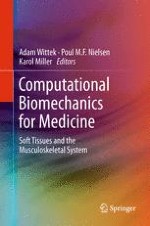2011 | OriginalPaper | Buchkapitel
Patient Specific Hemodynamics: Combined 4D Flow-Sensitive MRI and CFD
verfasst von : A. F. Stalder, Z. Liu, J. Hennig, J. G. Korvink, K. C. Li, M. Markl
Erschienen in: Computational Biomechanics for Medicine
Verlag: Springer New York
Aktivieren Sie unsere intelligente Suche, um passende Fachinhalte oder Patente zu finden.
Wählen Sie Textabschnitte aus um mit Künstlicher Intelligenz passenden Patente zu finden. powered by
Markieren Sie Textabschnitte, um KI-gestützt weitere passende Inhalte zu finden. powered by
